In Korea, a rich coffee culture is a crucial part of the modern lifestyle. Not only do you find far too many Starbucks branches. No, there are countless cafés where you find peace’n’space to study, work, or just relax while enjoying a house specialty. In Busan, they even have a so-called Cafe Street! For you, I bit the bullet and immersed myself in the city’s vital café culture. This allows me to introduce you to the 7 best and most beautiful coffee houses in Busan.
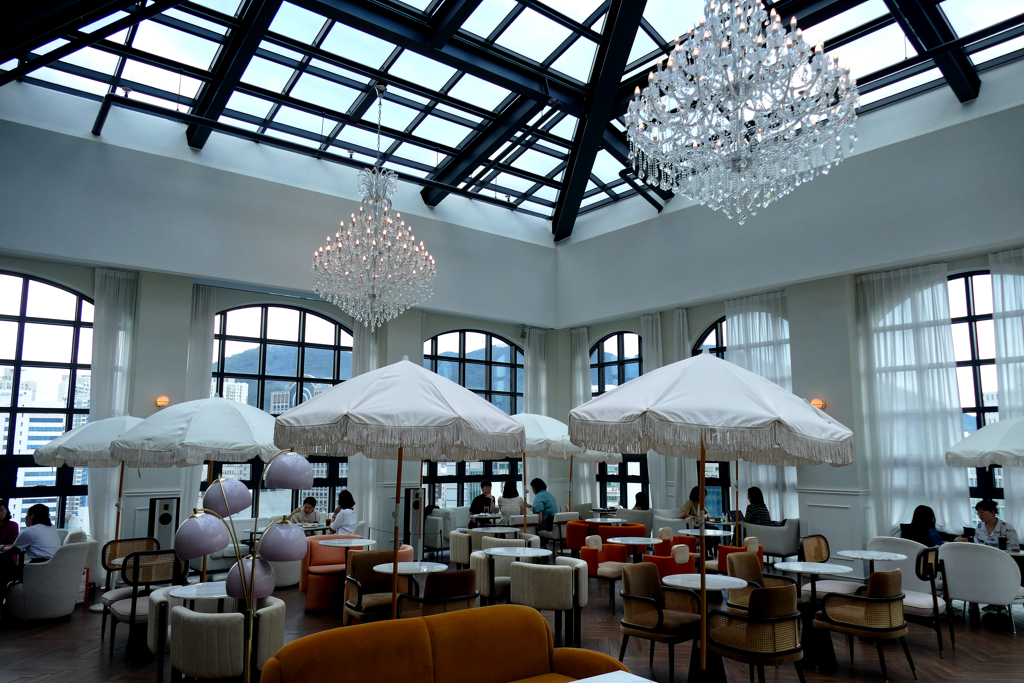
Coffee in Korea
Interestingly, apart from green tea, coffee has been another strong element in South Korean culture. Originating in the 19th century, it has become an important commodity in local marketplaces.

In his chronicle about the history of coffee in Korea, which he wittily calls Gojong Visits Starbucks, the author Kang Jun-Man claims that King Gojong, the 26th and last ruler of the Joseon Dynasty, was the first person to try coffee in Korea. It was the sister-in-law of a Russian ambassador who treated the monarch to his first sip in 1896. From then on, coffee consumption quickly became a cherished symbol of modernity and Westernization among Koreans.

In the early days, coffee shops in Korea were called Dabang. The very first one was built in Seoul in 1902. However, the reason for going to a Dabang was more the company and conviviality than the consumption of the beverage. Also, coffee was not for everyone as the price was still quite high at that time. In addition, just like in European metropolises, Dabangs were the epicenter of debates about controversial topics such as politics and religion. Therefore, the Korean government had an eager eye on the visit of those coffee houses.
Eventually, in the 1960s, Dabangs began to be more frequented by the middle class. Most importantly, they were very popular dating places.
Buy Local
Already in the 1980s, the competition among the countless Dabangs increased so rapidly that the businesses were forced to develop a special, unmistakable trademark not only on their menu but above all in their appearance to compete in the crowded market.
Unfortunately, Starbucks introduced the quick’n’dirty way of consuming coffee to the entire world, hence, also in Korea. Today, self-service systems that do not require any staff at all have even surpassed the imported takeaway concept.
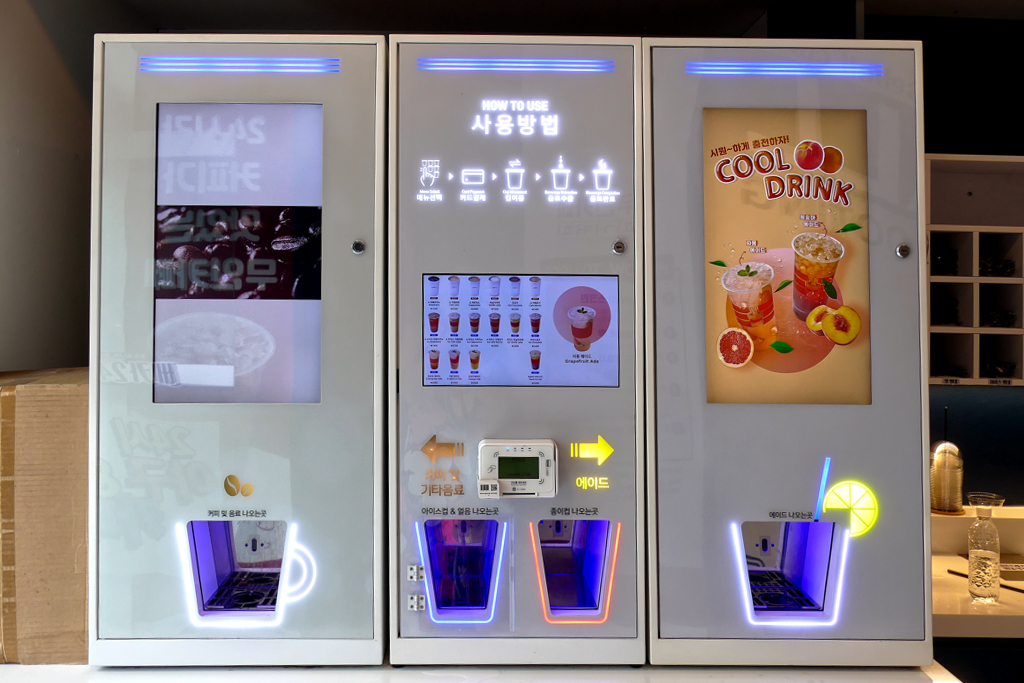
Other foreign franchises have come to Korea, and in addition, local chains such as Caffé Bene, Ediya, and Hollys were founded.
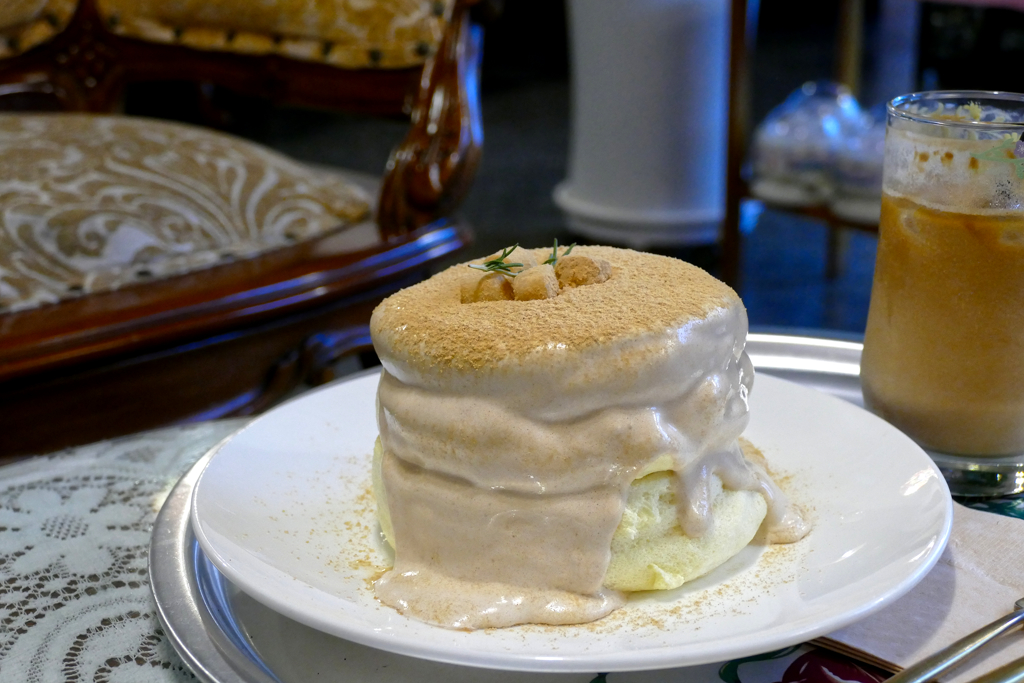
In contrast to these soulless franchise businesses, individual, distinctive cafés were established. They roast their coffee beans in-house and demand the highest quality when preparing their house specialties.
Setting Records
Every year, Koreans purchase approximately 660,000 tons of coffee. This means that Korea has a per capita coffee consumption of around 2.5 kilograms, which includes babies, children, and the elderly.
There are an estimated 50,000 coffee shops in Korea. The leader is Seoul with around 17,000 coffee shops. There included are more Starbucks branches than in any other city in the whole world, including New York.

By far the most popular coffee specialty among Koreans is Iced Americano – regardless of the outside temperature. Koreans drink it even on icy winter days. Legend – and statistics – has it that in winter, the consumption of Iced Americano is even higher than that of hot beverages. The quite sad reason for the popularity of this beverage is Korea’s fast-paced culture. In contrast to other hot beverages, the Iced Americano is prepared in no time and can be drunk immediately and chugged quickly.
This way, Koreans reach an average annual coffee consumption of more than 350 cups.
That would then be twice as high as the global average.
Kudos.
My Seven Favorite Coffee Houses in Busan
As I wrote above, the rich and varied coffee culture has a firm grip on Korea. It would take years of research and testing to find what are undoubtedly the best coffeehouses in the country. And by the time I completed my mission, countless new ones would have opened, so I had to start all over again.
Therefore, in this post, I will limit myself to two of Busan’s most beautiful neighborhoods, Jeonpo and the Hynyeoul Cultural Village on the west coast of Busan’s offshore island of Yeongdo.
No less an authority than the New York Times selected Jeonpo as one of 52 World Destinations of the Year in 2017. After all, the area is kind of Busan’s Greenwich Village. Lots of creativity, tons of subcultures, and all that with a good cup of artisan coffee.
Hynyeoul, on the other hand, is by far the most scenic of Korea’s Culture Villages. It is a picturesque place right by the sea. Here you can admire art, enjoy snacks and quenchers, and take a long walk along the coast, always with the view of the magnificent skyline of Busan’s city center.
But let’s first explore Jeonpo.
Vintage 38
First of all, I have to complain about one thing, namely that most cafés only open at 11 a.m. or even later and are therefore not suitable as breakfast places – at least for early risers like me. At 11 a.m., I’m still full from breakfast and, with the best will in the world, I can’t eat any of the decadent cream cakes that are calling my name so enticingly.
Very unfortunate.
However, Vintage 38 is a laudable exception. This beautiful and atmospheric café opens at 9.

The spacious hall was originally a factory. When the rooms were later converted into a café, the concrete and raw brick walls were simply left the way they were. In combination with some dim atmospheric lighting and antique and quirky decoration, a fantastic place has been created that is perfect for working but also for a chill break.

Quite rightly, Vintage 38 is famous throughout Busan for its delicious and exquisite cakes and other desserts. As a matter of fact, Vintage 38 also runs an excellent bakery in addition to the café.

Don’t let the pictures here fool you: I was at Vintage 38 on a Monday morning. However, the café is so popular with locals that on weekends, you can often only get a seat by pure luck. Also, the best desserts tend to sell out quickly.

Vintage 38 is located on Jeonpo-daero 199beon-gil #38 and opens every day from 9 a.m. to 2 a.m. On Tuesdays, however, they are already closing at 11 p.m.
Space And Mood
Be warned: You shouldn’t be shy when looking for some of the most beautiful cafés in Busan. You’ll have to venture into inhospitable backyards, sneak through dark hallways, and even go up to the 13th floor of an apartment building.
Because there, on the top floor of a building where the elevator on the way up opens its doors even at a doctor’s office, is the Cafe Space And Mood. It is a luxurious, light-filled room with exquisite interiors. In particular, the oversized chandelier that hangs above a spiral staircase has now become world-famous thanks to Instagram.

The stairs lead down to the rooms on the two floors below, where art courses take place. A different course is scheduled every day. If you are interested, just ask at the bar.
You like the exquisite porcelain on which the selected delicacies, such as Orange Earl Gray Chiffon Cake, are served? No problem, if you’re willing to dig a little deeper into your pockets, you can take it home with you as a valuable souvenir. Yes, the prices are on the higher side.
But if you are an art lover and value beautiful ceramics, it is the perfect opportunity for you.
Can’t tear yourself away from Space And Mood? Then just stay overnight! No, I’m not kidding: Space And Mood is not only a luxurious café, but also runs an equally beautiful Space and Mood Hotel* on the lower floors.
The Space And Mood Café is located on Saessak-ro #22-1 and opens daily from 10 a.m. to 11 p.m.
Alike Café
The way to the Alike Café was not just a search. It was an expedition. All I had was an address. After circling a block three and a half times, I ended up with a doorman who obviously didn’t speak a word of English. Even when I showed him the address in Hangul, the Korean letters, he couldn’t figure out where there might be a café.
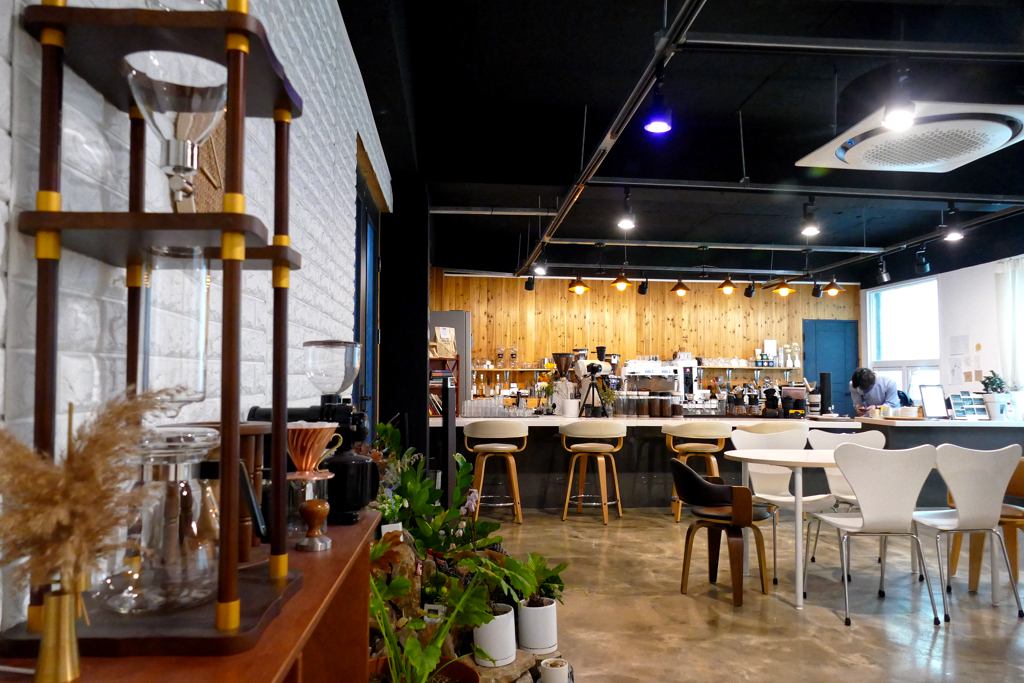
You think that discouraged me? Not even close! The fact that it took so much effort to find this café made it a special challenge. Like on a Korean scavenger hunt, I worked my way through Jeonpo’s northern outskirts, encouraged by a lot of ambition and a good translation app, until I finally found myself standing in front of a building that looked rather abandoned and was definitely in need of renovation. I hesitantly climbed through the unplastered, unlit stairwell to the second floor. Nothing looked even close to a public café.
Here We Are
Finally, I ventured into a narrow, dark hallway and unsurely opened a glass door. A young man stood at a counter arranging some props. Behind him was a professional-looking camera on a tripod. At one of the tables, a young woman stared at her cell phone. From time to time, she took a sip of coffee from the glass in front of her.
Nobody seemed to notice me. I reluctantly approached the man with the camera and coyly showed him the photo of the café I was looking for on my cell phone. “Is this this very place?” I asked, tapping on the photo and then pointing at the room. The man hesitated and tried to figure out what I meant. Finally, he nodded eagerly.

Including his language skills, everything here was exclusively in Korean. Very slowly and clearly, I ordered a coffee latte. With my fancy-looking drink in hand, I sat in a corner.
Sipping the delicious bitter brew, I pondered how going for coffee can actually be a job for Dora the Explorer.
Look for Alike Café – or Hyangmi Gonggan Café, as it is sometimes called – at number 41 of the Dongcheon-ro 108beon-gil Street. You should find them open from Monday to Friday between 2 p.m. and 10 p.m. On Saturdays, they open already at 1 p.m.
Awluk Café
Does anyone remember the episode of The Big Bang Theory where Sheldon and Penny improvise acting, and he orders frozen yogurt at a shoe store?
Good one – made us laugh so hard!
Now, some business concepts in Korea seem as unusual as the yogurt shoe store, at least at first glance.
But Awluk proves that a café and a leather workshop together are an unlikely yet absolutely fabulous combination, just like a kitten and an otter becoming friends.
At the top of Jeonpo Cafe Street, the owner has created a wonderful retreat on the second floor of a small, inconspicuous house.

This cozy, warm place isn’t just about drinking coffee and enjoying a snack. Here you can also buy high-quality handmade leather accessories. They offer a variety of products such as cases, wallets, bookmarks, and much more.
Of course, the coffee is also of the best quality. There are three different types of coffee beans on offer, which are then thoroughly made into delicious, stimulating beverages.
A room decorated with warm raw wood has a sophisticated charm. It’s not very big, about 6 to 7 tables fit in. With loungey background music, Awluk is an ideal place to visit to read a book all by yourself or to have an intimate chat with a friend.
The Awluk Café is located on the second floor at Jeonpo-daero 210beon-gil #48 and opens daily from noon to 9 p.m.
Cupnut
I already mentioned some of the Korean coffee chains above. Cupnut is a chain that specializes primarily in donuts, but you have to wash down the sweet stuff somehow, and that’s why they also brew coffee. There are several locations in Seoul, Daegu, and, of course, Busan.
I’m more of a lover of savory and spicy foods and actually not a big fan of sweets and desserts. But Cupnut’s donuts are really tempting. The café offers a wide range of flavors. There are the traditional ones like vanilla, strawberry, and chocolate, but also exotic, local flavors like lotus and sweet potato. The presentation of the baked goods is beautiful and very tempting. Each donut is generously filled with cream. On top of that, there is, of course, the appropriate glaze and often a particularly beautiful decoration. Cupnuts donuts are big and chewy.
Of course, the café also offers a large selection of beverages. There are the usual coffees like Café Latte and, of course, Iced Americano, we are in Korea after all. But you can also choose from various teas and soft drinks. My absolute favorite is an iced black sesame latte. If you don’t know this drink, you should definitely try it.

The Cupnut in Hynyeoul is in a former residential building and is spread over three floors. The walls are painted dark, and the furniture and decoration are extremely minimalist. Of course, Cupnut also has a large roof terrace from which you have a fantastic view of the sea and Busan’s coast.
If you don’t want to waste time, you can also order everything to take away from Cupnut’s street-side sales window.
The Cupnut branch in Hynyeoul is located at Geumjeong-ro 149beonan-gil #18. They are open every day from noon until 10 p.m.
Hynyeoul Beach
I don’t think anyone will contradict me when I say that Cafe Hynyeoul Beach is by far the most lovingly decorated coffee house in the entire Hynyeoul Village.

As soon as you step in, you get the feeling of entering a holiday resort. Light wicker furniture and decorations made from flotsam and shells give the place a Mediterranean-tropical atmosphere. The interiors are rather small. But since they are spread over two floors, finding a comfortable spot shouldn’t be a problem.

You have to place your order at the counter and also carry it to your seat yourself before you can enjoy it with a view of the sea.

Don’t forget to pay the spacious roof terrace a visit. You can get up there through the gate next to the cafe. The tropical theme continues here, too: you sit in the shade of pretty straw umbrellas, looking over the sea and back at the skyline of Busan.
Yes, life is a beach.
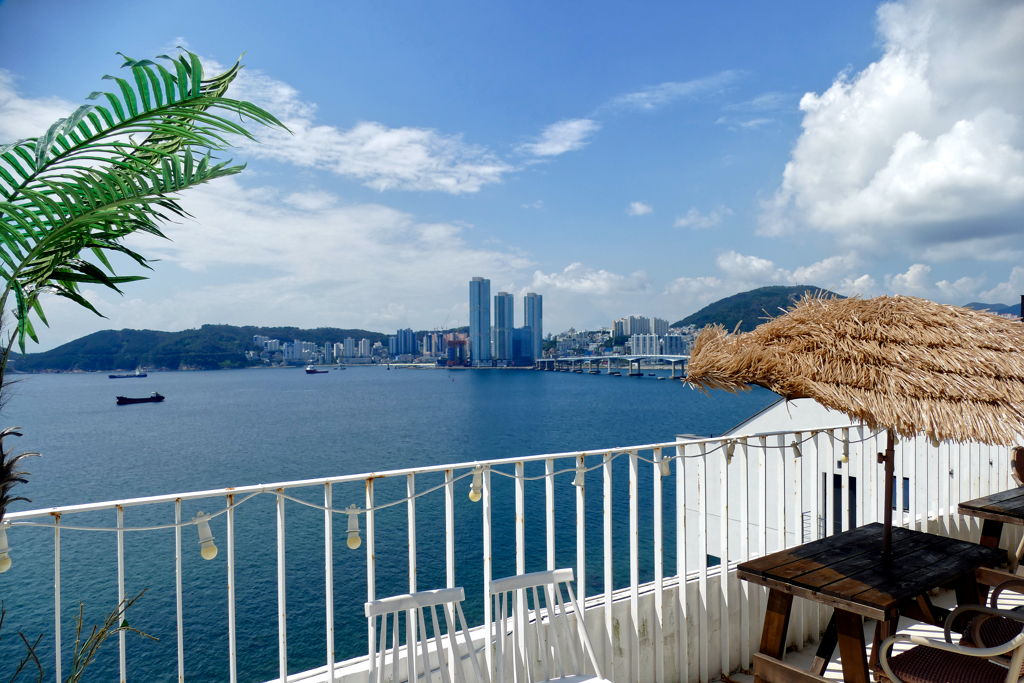
The Hynyeoul Beach Café is located on Yeongseon-dong 4-ga #1109 and opens every day from 11 a.m. to 8 p.m. Saturdays, they are closing only at 9 p.m.
Café Jimmy
Like many other cafés, Café Jimmy also relies on the charm of an eclectic mix of bric-a-brac and antiques. In this case, however, the room is not plushy and dark, but painted in friendly white as a tribute to the maritime surroundings. The furniture is wildly thrown together and yet complements each other in unexpected harmony. Old ornate dishes wait in fancy cabinets to be used. Glass tops protect Grandma’s white-starched tablecloths from coffee splashes.

Since this cute little oasis is hidden in the middle of the maze of Hynyeoul’s alleyways, there is, of course, also a spacious terrace for those who prefer to enjoy their coffee with a panoramic view of the sea.
The Café Jimmy is located on Jeoryeong-ro #224 and opens every day from 11 a.m. to 10 p.m.
How to Get There and Around
Just like everywhere in South Korea, inner-city transport in Busan is perfect! There is a reliable bus service and a comprehensive subway network. However, don’t underestimate the size of the city and the time you’ll spend on public transport.
The fastest way to get to the trendy neighborhood of Jeonpo is by taking the subway to Jeonpo Station, obviously. But you can also get there by bus #54, #85, #138-1, and #160.

There is no subway going to Hynyeoul, but buses #6, #7, #70, #17, as well as #508 drop you off anywhere on the main street Jeoryeong-ro.
A single trip costs around KR₩ 1,200, and you save a bit if you pay with a money card. If you already have a T-money card, you can also use it in Busan. However, if you need to obtain one, keep in mind that in Busan, they call it Hanaro Card.
Once you’re there, both neighborhoods are best explored by walking, obviously. At least in Jeonpo, you might also cycle, however, the area is quite hilly. Also, in the afternoon, it tends to get crowded. Cycling in the Hynyeoul Village is hardly possible and definitely not recommended.
So yes, these are seven of the most beautiful Coffee Houses in Busan. If you need further inspiration on what to see when visiting Busan for a couple of days, go to my post The Perfect Itinerary for Three Days in BUSAN. To obtain comprehensive info that will make your trip to Korea smoother and much more fun, just rush over to my post Grand Tour of SOUTH KOREA – A Guide for Individual First-Time Visitors where you not only find many suggestions on what to visit but also tons of practical information and tips on lodging, public transport, money and discounts, connection and communication, and much more.
Map
On this map, you can see where exactly the coffee houses I’m introducing above are located.
Clicking on the slider symbol at the top left or the full-screen icon at the top right will display the whole map, including the legend.
Pinnable Pictures
If you choose to pin this post for later, please use one of these pictures:



Note: This post is being regularly completed, edited, and updated – last in August 2025.
Did You Enjoy This Post? Then You Might Also Like These:
Best And Most Beautiful Bookstores in Seoul
Grand Tour of SOUTH KOREA – A Guide for Individual First-Time Visitors
Best Things to Do in SEOUL: The Must-Dos And the Hidden Gems
The World’s Largest Mural in Incheon
7 Best And Most Beautiful Coffee Houses in Busan
GYEONGJU: Two Days in the City Where Korea’s Imperial History Comes Alive
A Day Trip to the Haeinsa Temple the Easy Way
Mallipo Beach And Chollipo Arboretum: Korea’s Perfect Getaway
* This is an affiliate link. If you book through this page, not only do you get the best deal. I also get a small commission that helps me run this blog. Thank you so much for supporting me!







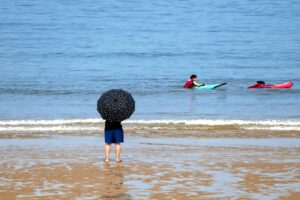
You really capture the essence of Busan’s coffee scene. I love how you mix the history of coffee in Korea with your personal experiences. Your focus on local cafes over big chains is refreshing and gives a real sense of Busan’s unique vibe. I would love to visit Vintage 38 or Space And Mood. Thanks for the insightful guide – perfect for coffee lovers heading to Busan!
Glad you like it – I’m happy my message came across 😀
Wonderful post! We missed all of this places during our last trip to Busan. All of these places look lovely and the sweets and treat are mouthwatering. The Alike Cafe looks pretty cool. So, did you try any speciality filter coffees in Korea too?
The cafés were really amazing – the only thing I regret is that I had only half day for my mission 😀 But I’ll be back 😉